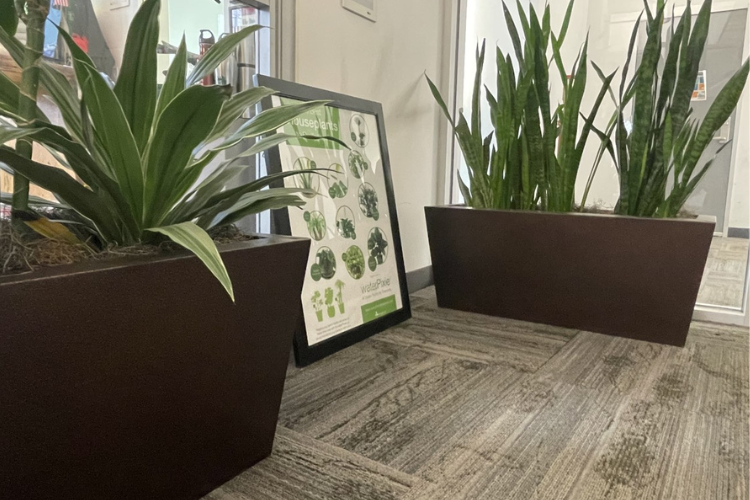
Bringing plants indoors allows you to connect with nature and still be indoors.
Common Benefits to Air Quality
High transpiration
High removal rating of common pollutants found indoors:
- Acetone
- Alcohol
- Benzene
- Carbon Dioxide
- Formaldehyde
- Toluene
- Trichloroethylene
- Xylene
Listed below is an assortment of plants displayed at the Green Building Resource Center.
Chamaedorea [Bamboo Palm]
Tall columnar habit with feathery textured leaf
Benefits to Air Quality:
High transpiration
High rate of removal of benzene, trichloroethylene, and formaldehyde
Culture:
Moist soil. Medium to high medium light. Fertilize 4 times a year.Examine often for spider mites.
Dracaena Deremensis Janet Craig [Janet Craig Dracaena]
Durable dark green leaves in tall cane or bush form
Benefits to Air Quality:
High transpiration
High rate of removal of trichloroethylene, xylene, and toluene
Culture:
Slightly moist soil. Medium to high medium light.
Fertilize 4 times a year.
Sansevieria trifasciata [Snake plant]
Short plant with hardy, thick leaves growing upward in a clean line
Benefits to Air Quality:
Releases O2 into the air and removes CO2 from air.
Culture:
Allow to dry between watering.Medium to high light.
Fertilize 4 times per year.
Spathiphyllum [Peace Lily]
Lust low growing bush with attractive white flowers in the summer.
Benefits to Air Quality:
High transpiration
High rate of removal of alcohol, acetone, trichloroethylene, benzene, and formaldehyde
Culture:
Very moist soil. Medium to low light. Fertilize lightly once a month March through September.
Dracaena deremensis Warneckei [Warneckei]
Stiff lighter green leaf with white stripe in tall cane or bush form
Benefits to Air Quality:
High transpiration
Medium rate of removal of benzene
Culture:
Slightly moist soil.Low medium to low light. Fertilize 4 times per year.

